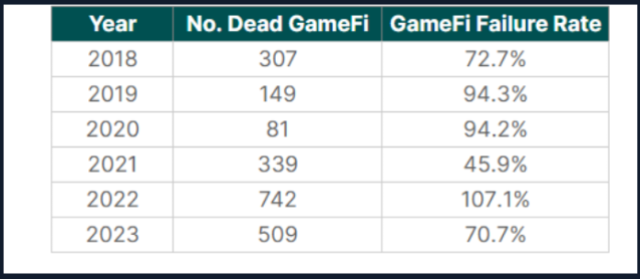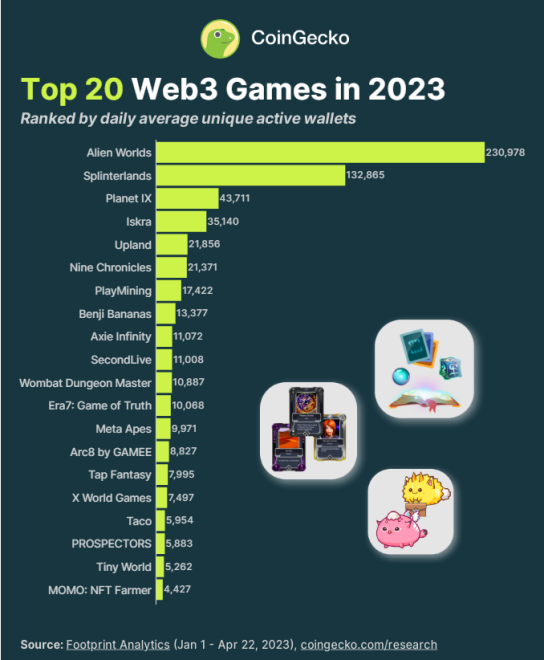Over the past few months, there has been a noticeable downturn in crypto-based games in the GameFi market category, which combines game theory and blockchain technology inside the decentralized finance ecosystem.
A recent analysis by cryptocurrency pricing tracker Coingecko found that a sizable 75% of GameFi ventures have failed. This slump highlights the difficulties that initiatives attempting to combine these cutting-edge ideas with gaming and decentralized money encounter. It also demonstrates the difficulties that exist in this confluence.
Crypto-Based Games Survival Metrics
Only 690 of the 2,817 games released between 2018 and 2023, according to the analysis, still have a reasonably active user base. A Web3 game is considered “failed” by CoinGecko if its 14-day moving average of active users falls by 99% or more from its peak.
According to CoinGecko, since game finance, or GameFi, first appeared five years ago, three of every four Web3 games have ceased to be operational. Only a few months have passed since a different study revealed that 95% of NFTs are now essentially worthless.

Because of the bull market, 2021 had a lower failure rate of over 46%. But the quantity of unsuccessful Web3 games increased to 339, exceeding the numbers from 2018.
The market continued to fall in 2022, a year in which the number of unsuccessful games more than doubled to a record-breaking 742, raising the failure rate to an all-time high of 107.1%.
Of the games released this year, 509 (or 71%) have not succeeded as of 2023. There may be a chance for the Web3 gaming market to stabilize given this decline in failure rates.
As of today, the market cap of cryptocurrencies stood at $1.386 trillion. Chart: TradingView.com
Extinction Coming To Web3 Games?
In late 2017, Canadian studio Dapper Labs created the blockchain game CryptoKitties. The game’s popularity brought GameFi to light in 2018. Play-to-earn (P2E) gaming gained popularity at that point in the cryptocurrency narrative, leading to the release of 422 Web3 games in 2018 alone.
One of the first Web3 games to gain popularity in late 2017 was CryptoKitties, although its uptake has since waned. Among the other popular crypto-based games from earlier that are still in use today are Axie Infinity, The Sandbox, and Decentraland.

A business strategy for video games called Play-to-Earn (P2E) offers players fair compensation for their time and labor. In-game cryptocurrency and non-fungible tokens that may be sold, exchanged, or used as collateral in other financial applications are popular incentives.
From January 1, 2023, to April 22, 2023, the three most popular Alien Worlds, Planet IX, and Splinterlands, according to current data, average unique active wallets were the highest.
Additionally, data reveals that the number of dying Web3 and crypto-based games increased to a record high of 742 last year. In addition, it had the greatest failure rate ever—107.1%—while the quantity of new Web3 games continued to rise.
The downtrend was once more ascribed to the mid-June 2022 onset of the cryptocurrency market recession.
The coming months will likely be pivotal in determining which projects can withstand the challenges and ensure their survival amid this dynamic and competitive landscape, avoiding the looming threat of extinction that hovers over these crypto-based games.
Featured image from Freepik













